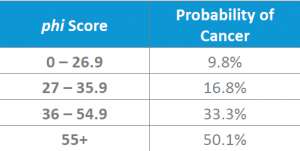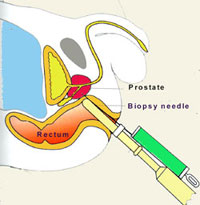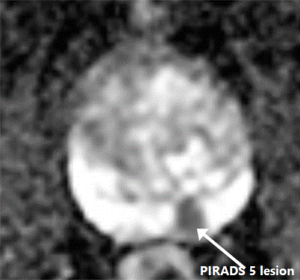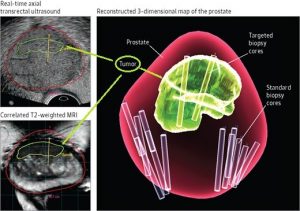
Raised PSA > 4

Prostate-specific antigen (PSA) is an enzyme produced exclusively by the prostate gland. A PSA levels > 4 ng/dL is traditionally used as an indicator for prostate disease. Elevated PSA levels may indicate prostate cancer or noncancerous conditions such as prostatitis or enlarged benign prostate (BPH) [Fig 1].



PSA testing should only be done in men above the age of 50 years. To include it in health screening in healthy men below this age is not recommended as it leads to undue anxiety if it is found to be high. Indeed, the level can continue to be elevated even on repeat testing. One postulate for elevated PSA values in asymptomatic young men is that they have ‘leaky’ prostates which allow more PSA to escape into the bloodstream. Some doctors attempt to treat high PSA levels with antibiotics on the assumption of underlying prostate infection. If so, the antibiotics ought to be given for a month and PSA re-tested 3 months later to allow for sufficient time for the infection to clear and level to drop. In men who have benign prostate enlargement (BPH), testosterone- inhibitor drugs like finasteride (Proscar) or dutasteride (Avodart) will artificially lower the PSA value by half. Hence, the actual PSA value is double that of what is reported. If the fall in PSA is not as expected when men with BPH who are on such drugs, then underlying prostate cancer has to be suspected and a MRI prostate is to be done.
Men with prostate cancer will have PSA levels of > 4 ng/dL, although cancer can (rarely) be seen in PSA levels below that. According to published reports, men who have a prostate gland that feels normal on examination and a PSA less than four have a 15 to 20% chance of having prostate cancer. Those with a PSA between 4 and 10 have a 25 to 33% chance of having prostate cancer and if the PSA is higher than 10, the risk increases to 67 to 80%. Some recent studies recommend lowering the cutoff levels to less than 2.5 or 3 ng/dL for young men who have a family history of prostate cancer. To further predict the likelihood of cancer, the free/total PSA ratio is also available. The lower the percentage (e.g. < 10%), the higher the chance of cancer. However, this reading only applies to PSA levels between 4 to 10 ng/dL and assumes that there is no underlying prostatitis. Even then, it has not been validated in Asian men. The prostate health index (PHI) is another lab test that can be used to predict cancer; a level > 55 is generally taken as high enough to trigger a biopsy [Fig 2].

Fig 2. PHI score to indicate the likelihood of cancer
Just as important as the PSA reading is the PSA kinetics, e.g. whether it is going up, how quickly, and over what period of time. It is important to understand that the PSA test is not perfect. Most men with elevated PSA levels do not have prostate cancer. The best way to confirm the cause of high or rising PSA value is from biopsies. Prostate biopsies can be done under transrectal ultrasound (TRUS) guidance with just local anaesthesia.[Fig 3].

Fig 3. Prostate biopsy is done under ultrasound guidance
Currently, we prefer to do an MRI scan prior to biopsy. Suspicious areas are assigned a PIRADS score [Fig 4].

Fig 4. The Pi-rads scoring system used in MRI prostate
Biopsies are especially indicated for Pi-rads 4 or 5 scores as their probability of cancer is high. [Fig 5]

Fig 5. PIRADS 5 lesion highly suspicious of cancer
The MRI images are also useful for TRUS-Fusion method of biopsy where the MRI image is superimposed over the ultrasound image to target the cancer [Fig 6].

Fig 6. Prostate biopsy using MRI-TRUS fusion method